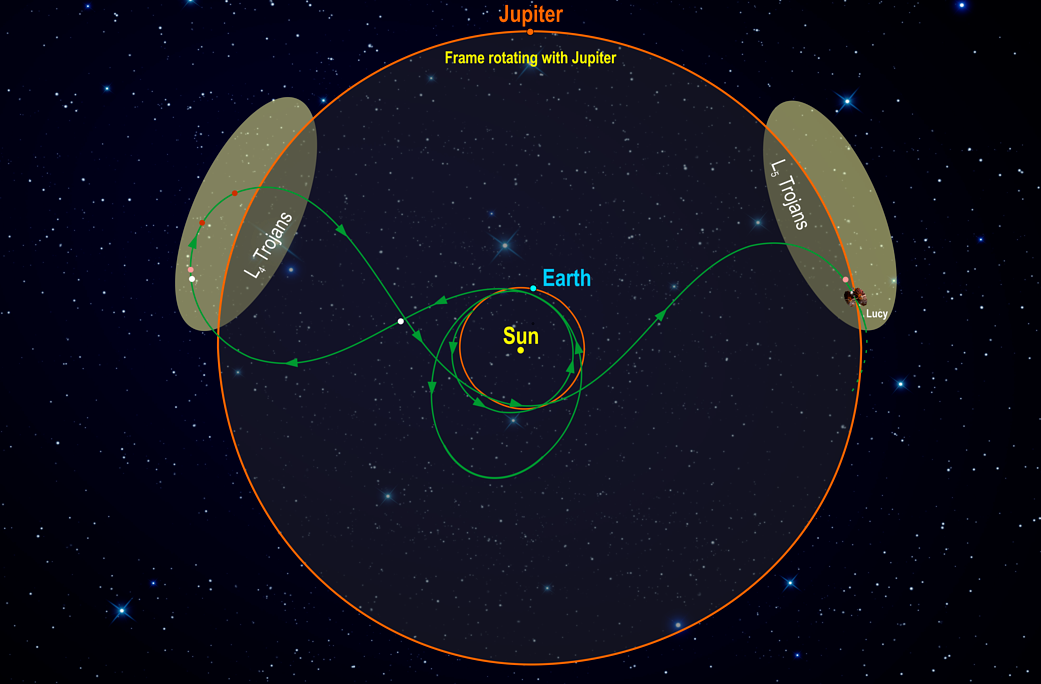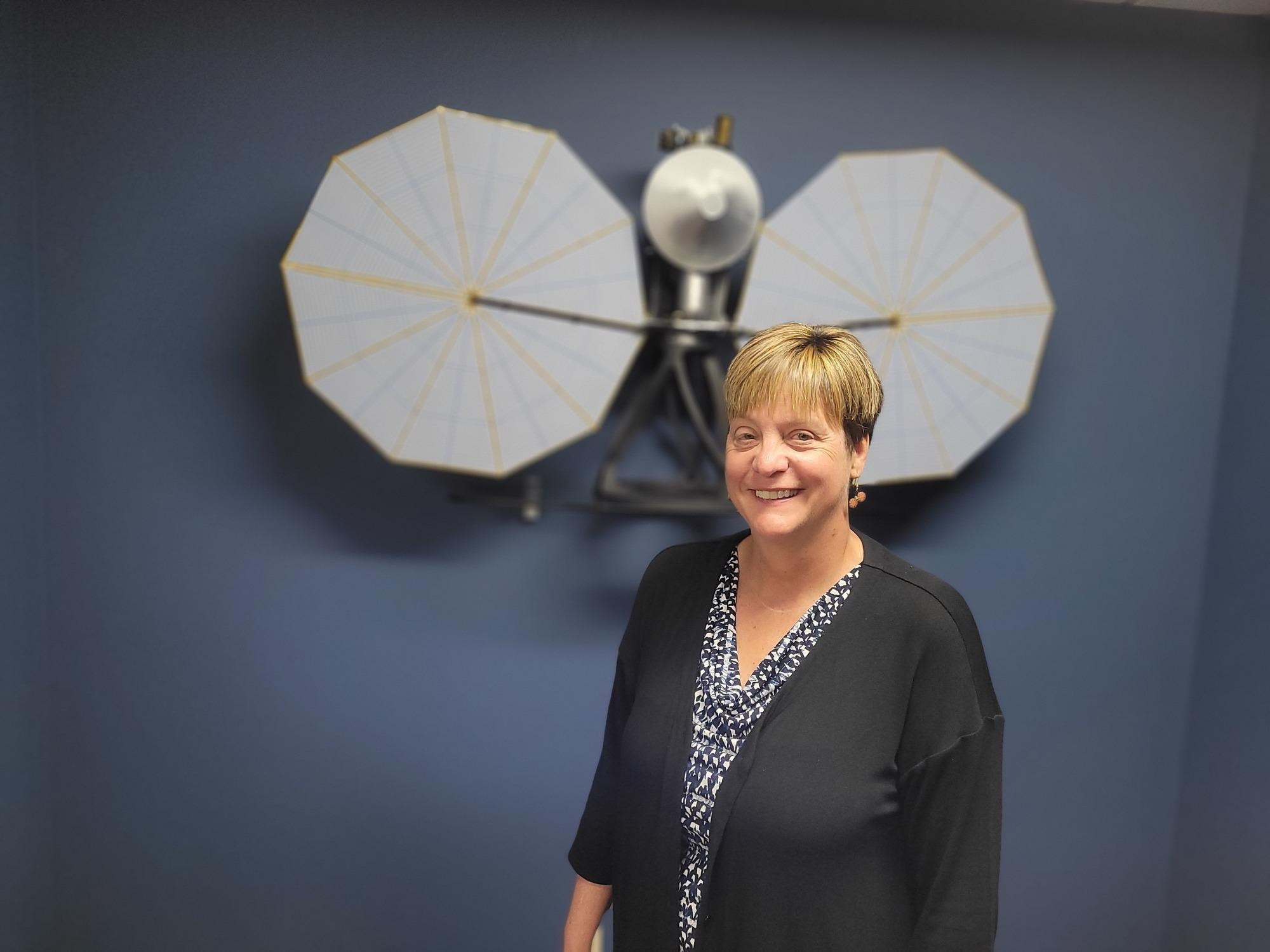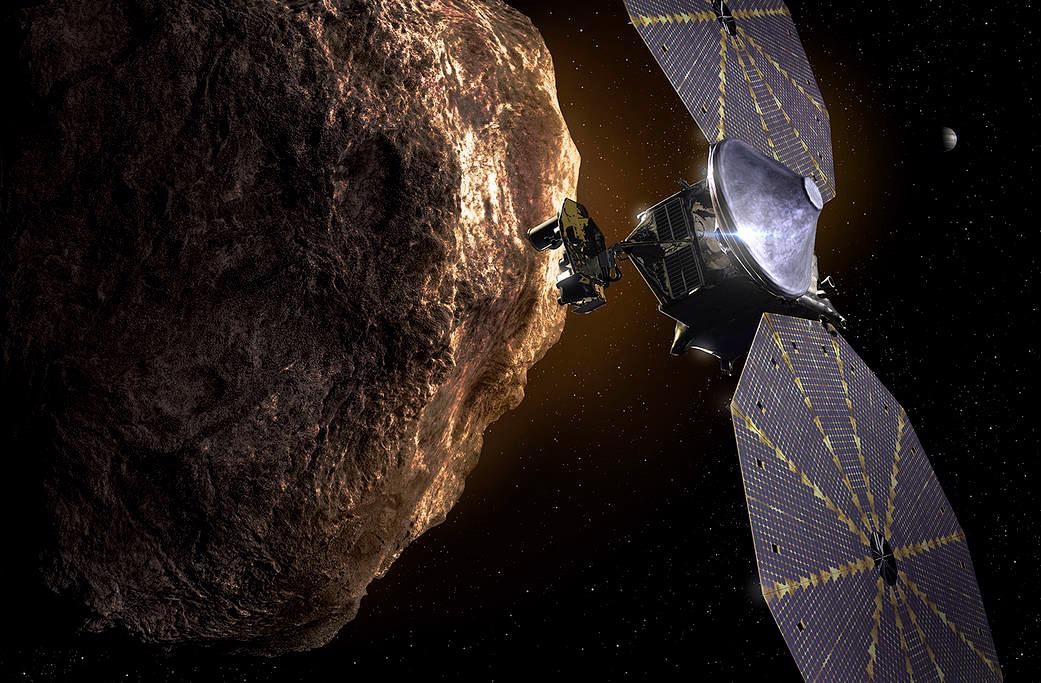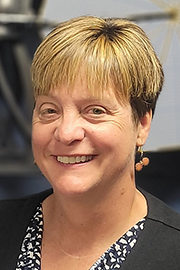AZoQuantum speaks with Dr. Cathy Olkin, Deputy Principal Investigator (DPI) of NASA's Lucy mission. Lucy is scheduled to launch no earlier than 5:34 a.m. (EDT) on Saturday 16th October, on a United Launch Alliance (ULA) Atlas V 401 rocket from Space Launch Complex 41 at Cape Canaveral Space Force Station in Florida.
Can you give our readers an overview of your role at the Southwest Research Institute?
I'm a planetary astronomer, with a primary research focus on small icy bodies in the outer solar system. I am particularly interested in understanding the surface ices and tenuous atmospheres of these ice dwarfs and primitive bodies, such as the Trojan asteroids and Kuiper Belt objects.
I've conducted stellar occultation campaigns, including ones in the 1990s to observe the tenuous atmosphere of Triton, the largest moon of the ice giant Neptune. In a stellar occultation observation, the object of study (in this case Triton) passes in front of a star as an observer on Earth records high-speed photometric imaging of the event.
The series of observations allows us to derive the vertical temperature and pressure profile in Triton's atmosphere near the micro-bar pressure level. These observations allowed us to constrain atmospheric models, assess turbulence in this distant atmosphere and place limits on haze in Triton's atmosphere.
I'm also interested in Pluto, serving as a co-investigator on the New Horizons mission. New Horizons revolutionized what we know about Pluto and its largest satellite Charon.
What has been your role in NASA's Lucy mission?
I am the Deputy Principal Investigator (DPI). The Principal Investigator (Hal Levison) is ultimately in charge of ensuring that the Lucy mission is a success by assembling and leading the scientific, management, and technical teams that handle all aspects of the mission. As DPI, I assist Hal on all facets of this large job, often serving as his proxy when he needs to be in two places at the same time.
I took a circuitous path to get here. I have a background in Aerospace Engineering and worked at JPL on Navigation in the early 1990s. I did orbit determination for Cassini and other mission concepts at the time. Then I went to graduate school for a Ph.D. in Planetary Astronomy with a thesis on understanding Triton's atmosphere using stellar occultation observations.
I was an observational astronomer for many years, making observations using the Hubble Space Telescope, the large telescopes on mountain tops from Chile to Mauna Kea, and using smaller telescopes for occultation observations across the world (from South Africa to the Marshall Islands).
In 2004, I had the opportunity to join the New Horizons mission team and this blended my engineering and science background. In 2008, I became interested in a mission to the Trojans. After previous Discovery and New Frontiers proposals, a mission to the Trojans, Lucy, was selected for flight! Here we are less than a week from launch, going to explore the Trojan asteroids!

The Lucy mission will launch in October 2021 and, with boosts from Earth's gravity, will complete a 12-year journey to eight different asteroidsImage Credit: Southwest Research Institute
Can you provide our readers with a definition of 'Trojan asteroids'?
Trojan asteroids are space rocks that orbit the Sun in tandem with Jupiter in two swarms, one preceding the gas giant and the other trailing it. Jupiter is so massive that it normally scatters all asteroids in its vicinity. However, the combined gravitational influences of the Sun and Jupiter have trapped these Trojan asteroids in stable orbits, probably since the planets formed more than 4 billion years ago.
The Trojans include a mix of physically distinct asteroids in a relatively small region. How did such a diverse population of objects come to occupy their particular region in space? To understand what this clue reveals about the history of the solar system, we need to visit a sampling of these objects. Lucy will study a record number of objects — seven Trojan asteroids, counting binary pairs, plus one main belt asteroid. No other space mission has included so many different destinations in independent orbits around the Sun.
What information can the Earth flybys provide?
The main purpose of the Earth flybys is to provide gravity assists to slingshot Lucy toward the Trojan asteroids. Additionally, there is a flyby of the main belt asteroid, Donaldjohanson. This flyby will be scientifically interesting and also serves as a rehearsal for the Trojan asteroid flybys.
How did the Lucy mission get its name?
The mission was named after the fossilized skeleton of an early hominid found in Ethiopia in 1974, which in turn was named after a celebratory evening the paleontologists spent dancing and singing to the Beatles' song "Lucy in the Sky with Diamonds."
Just as the Lucy fossil provided unique insights into the origin of humanity, the Lucy mission promises to revolutionize our knowledge of the origin of humanity's home world.

Dr. Cathy Olkin with a model of Lucy. Image Credit: Southwest Research Institute
What questions will Lucy's visit to Jupiter's Trojan asteroids help to answer?
One of NASA's principal roles is to help us understand how our world came to be — how a swirling mass of gas and dust orbiting the Sun eventually turned into the planets in our solar system, including our Earth, a complex planet that can support life.
We now understand that the planets grew in a system where young protoplanets pushed each other around, fighting for the resources needed to grow. Asteroids and comets are the leftovers of this epic battle. The planetary formation process sculpted these so-called small body populations, and they contain vital clues to our origins. If we want to understand how our solar system came to be, the clues are in these small worlds.

This illustration shows the Lucy spacecraft passing one of the Trojan Asteroids near Jupiter. Image Credit: Southwest Research Institute
The mission will provide an unparalleled glimpse into the formation of our solar system.
Can you give our readers an insight into the L'Ralph Instrument?
L'Ralph is the most complicated instrument on Lucy, combining an infrared spectrometer, the Linear Etalon Imaging Spectral Array (LEISA) and a visible-light color camera (MVIC). The instrument was led by Goddard Space Flight Center with contributions from SwRI. The Multi-spectral Visible Imaging Camera (MVIC), which was built at SwRI's San Antonio headquarters. Lucy's MVIC is small enough to fit in one hand, yet its five color bands cover the complete visible spectrum. Each band was specifically chosen to help scientists identify different asteroid components.
For example, the red band is sensitive to phyllosilicate, a hydrated mineral scientists expect to find on the Trojans' surfaces. L'Ralph's other channel, the imaging spectrometer LEISA, and the rest of the instrument were fully assembled and tested at Goddard Space Flight Center. LEISA detects absorption lines that serve as the fingerprints for different silicates, ices and organics of interest on the surface of the Trojan asteroids.
An SwRI team also constructed L'Ralph's main electronics box, which contains systems that control the instrument and communicates with the spacecraft. Once a spacecraft travels beyond Earth's protective magnetosphere, it enters an extremely harsh radiation environment that would damage unprotected electronics.
Because L'Ralph is such a complicated instrument, and mass and power are at a premium for deep space missions, the custom-built electronics box had stringent requirements. Its electronics collect MVIC and LEISA data, digitizing and reformatting for downlink before forwarding to another electronics box that sends the data to Earth. Even the computer logic was specially designed to gracefully recover from any disruptions caused by cosmic rays and other random events that the spacecraft will undoubtedly encounter over its 12 year journey.
What is the role of the L'LORRI Instrument?
L'LORRI, Lucy's LOng Range Reconnaissance Imager, is a high spatial resolution visible imager built by Johns Hopkins University's Applied Physics Laboratory. This black-and-white panchromatic visible light imager will provide the most detailed images of the surfaces of the Trojans. This instrument will also be used for optical navigation.
Lucy Mission's L’LORRI Instrument
Lucy Mission's L’LORRI Instrument. Video Credit: YouTube/NASA Video
By studying the Trojan asteroids, what can we learn about the history of the solar system?
Lucy's ability to fly by so many targets means that we will not only get the first up-close look at this unexplored population, but we will also be able to study why these asteroids appear so different. The mission will provide an unparalleled glimpse into the formation of our solar system.
Where can readers find more information?
Your readers can find more information on the NASA site and the SwRI site.
About Cathy Olkin
 Dr. Cathy Olkin is a planetary astronomer whose primary area of research focuses on small icy bodies in the outer solar system. She is interested in understanding the surface ices and tenuous atmospheres of these ice dwarfs. Olkin has been involved in a series of stellar occultation campaigns in the 1990s to observe Triton's tenuous atmosphere.
Dr. Cathy Olkin is a planetary astronomer whose primary area of research focuses on small icy bodies in the outer solar system. She is interested in understanding the surface ices and tenuous atmospheres of these ice dwarfs. Olkin has been involved in a series of stellar occultation campaigns in the 1990s to observe Triton's tenuous atmosphere.
Olkin is also interested in Pluto. She is a co-investigator on the New Horizons mission to Pluto and the PI for the Ralph instrument on the mission. The Ralph instrument is a visible imager and infrared spectrometer that is a prime instrument for many of the Group 1 science objectives. It was be used to make global maps both panchromatic and color. The LEISA component (IR spectrometer) of Ralph mapped the surface composition on Pluto and Charon by recording global spectral maps covering 1.25 to 2.5 microns.
As the Deputy PI for NASA's Lucy mission, Olkin is interested in understanding the Trojan asteroids and their diversity. This mission will be the first spacecraft to visit the Trojan asteroids. Over the course of 12 years, Lucy will execute five flybys of Trojan asteroids to visit seven Trojans.
Olkin holds a bachelor's degree in aeronautics and astronautics and a doctorate in atmospheric and planetary science from the Massachusetts Institute of Technology. She also holds a master's degree in aeronautics and astronautics from Stanford University.
Disclaimer: The views expressed here are those of the interviewee and do not necessarily represent the views of AZoM.com Limited (T/A) AZoNetwork, the owner and operator of this website. This disclaimer forms part of the Terms and Conditions of use of this website.